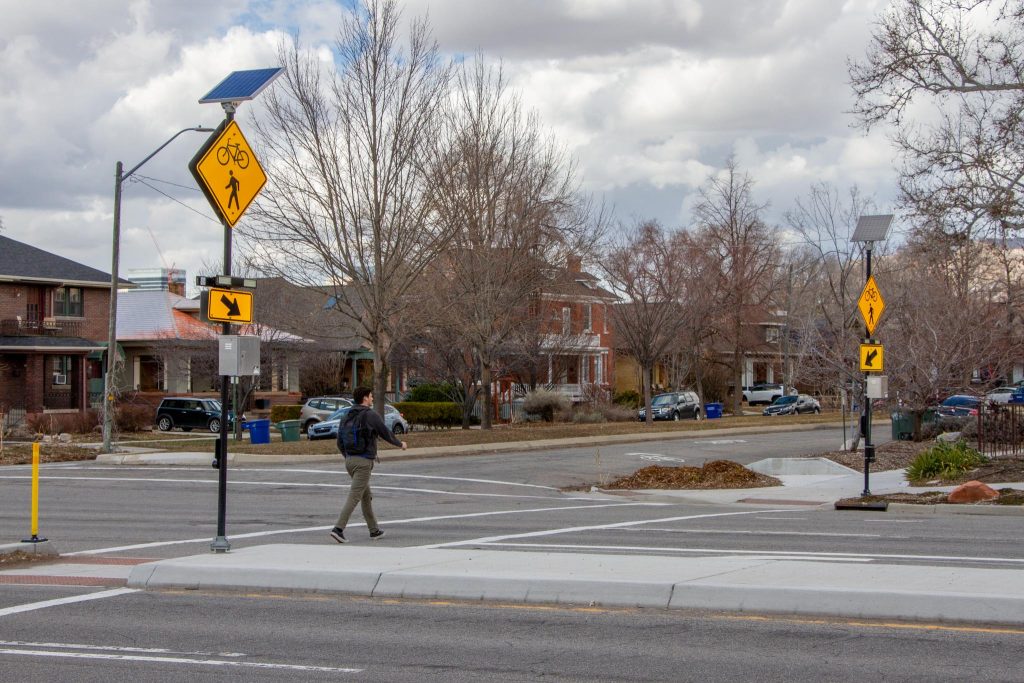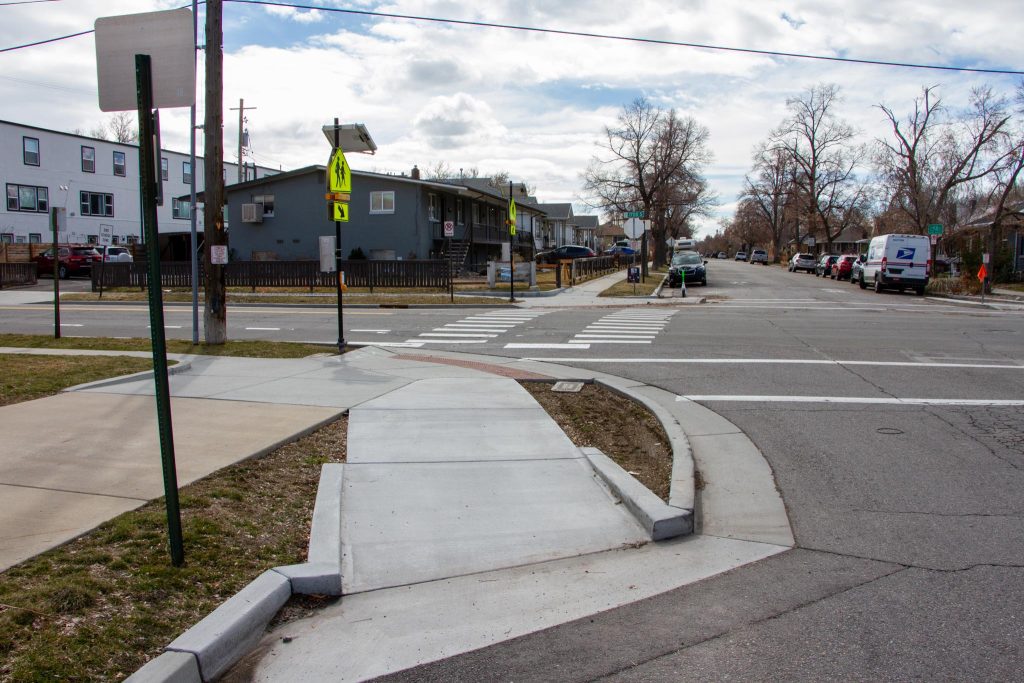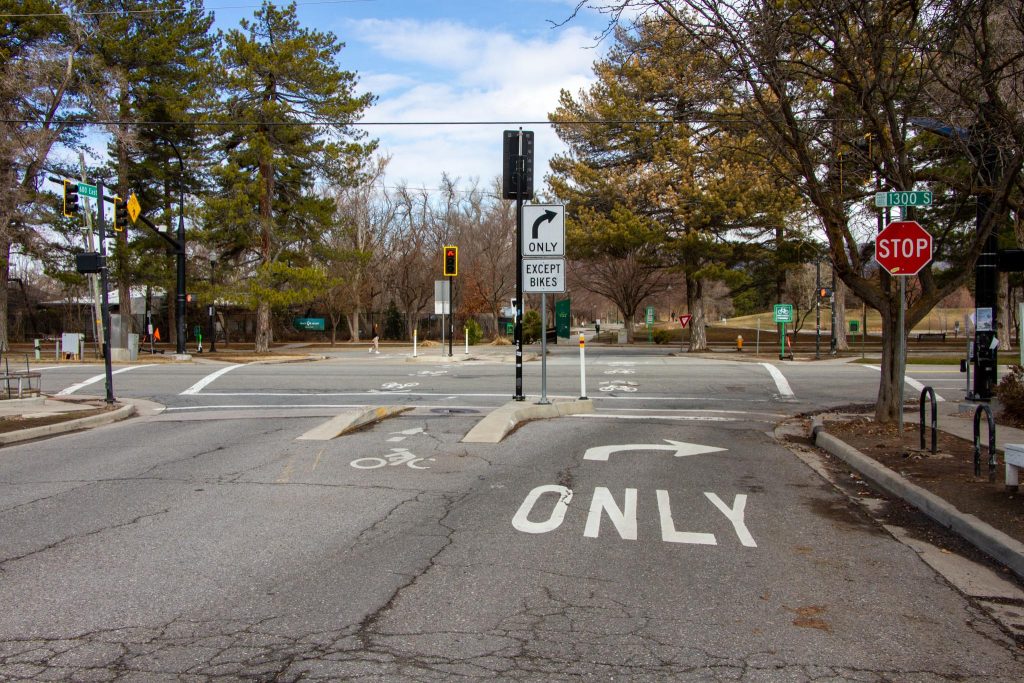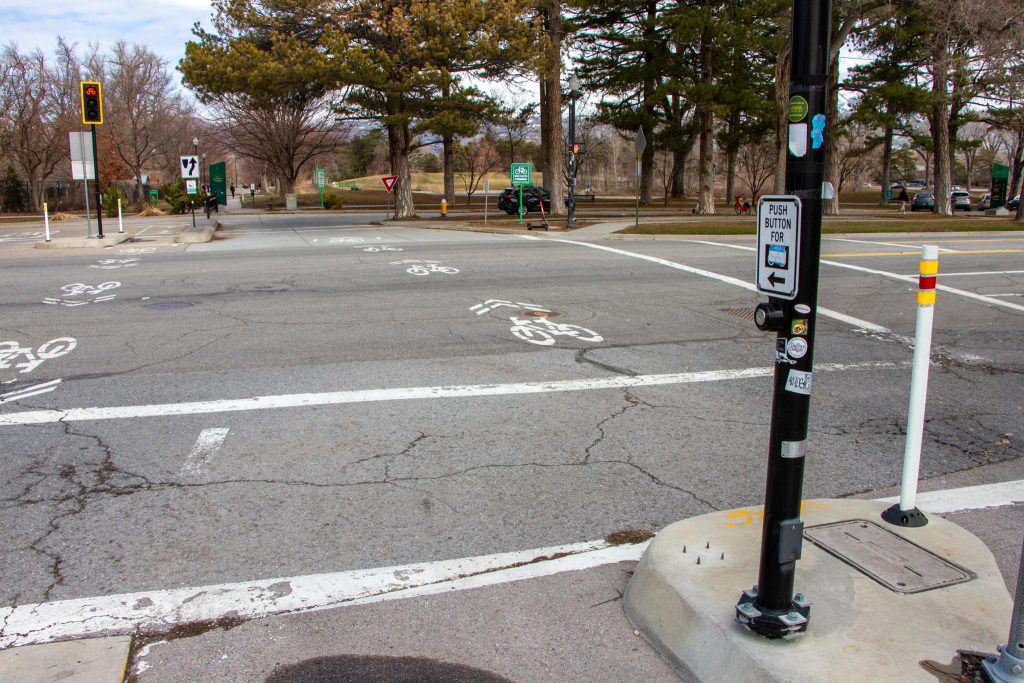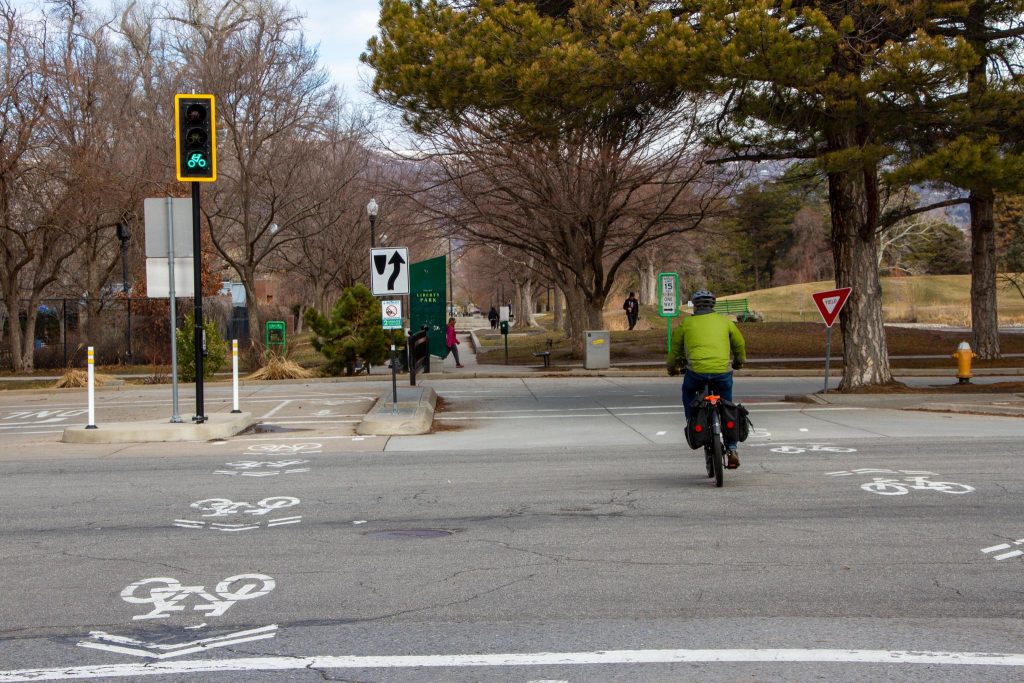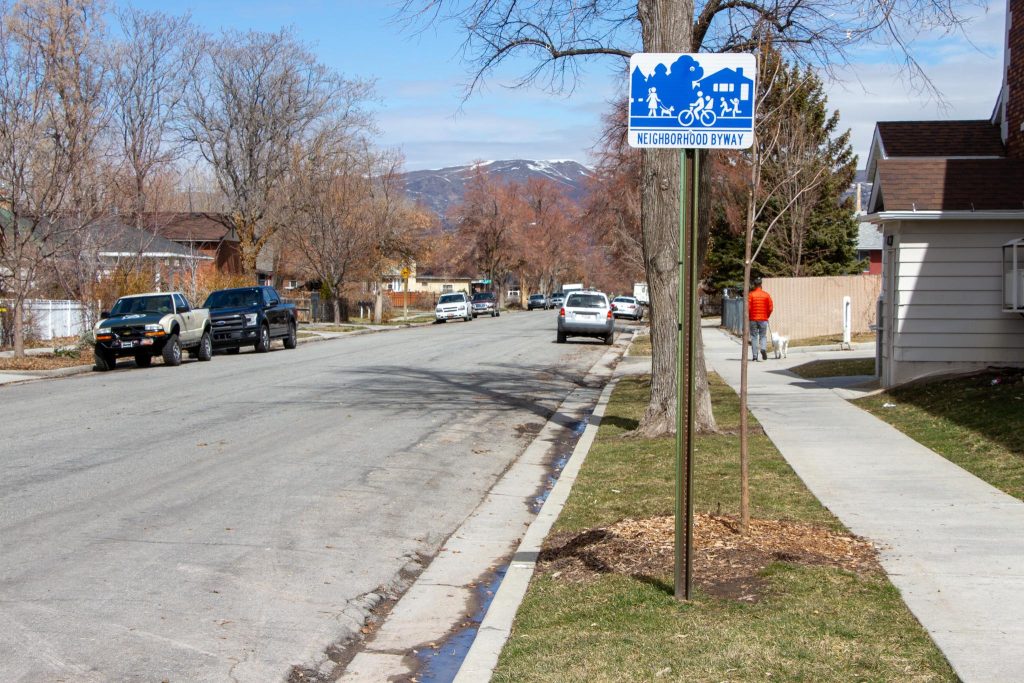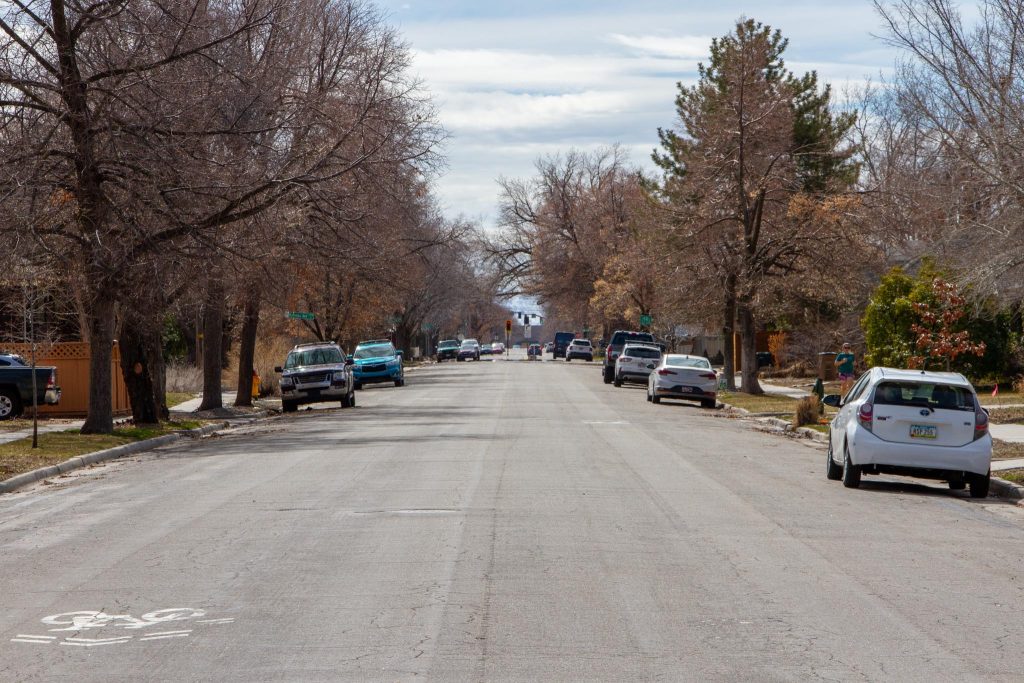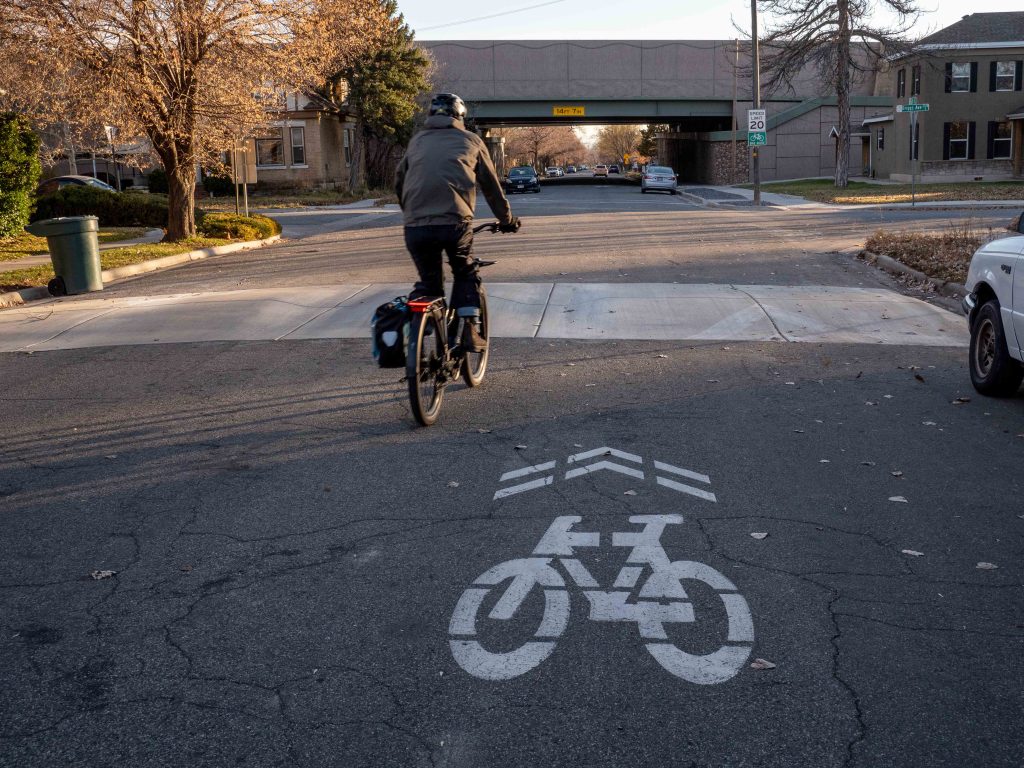What’s a Neighborhood Byway?
Salt Lake City is transforming how residents move through their neighborhoods, making it safer and more inviting for people of all ages and abilities to walk, bike, and roll.
The challenge
Traditional bike lanes often run along busy arterial streets—places where traffic noise, exhaust, and high speeds create an uncomfortable environment for leisurely cycling. Similarly, sidewalks on these busy corridors can be loud and stressful, making them less than ideal for walking with children or pets.
The solution
Neighborhood Byways bridge this gap by transforming quiet residential streets into comfortable corridors for active transportation. These routes connect people to their destinations while providing a calm, pleasant alternative to busy roads.
Features that make the difference
- Safer crosswalks at intersections with busy streets
- Strategic traffic calming measures where needed
- Bicycle-friendly curb ramps at key locations
- Wayfinding signs and pavement markings for confident navigation
- Improved connections to neighborhood destinations and existing walking and biking routes
- Trees to provide shade and create a comfortable street space
- Learn more in the Byway Design Guide
Building a connected network
Salt Lake City is developing a network of people-friendly streets that makes active transportation a viable option for daily life—not just recreation. Ready to explore? Visit the pages and check out the map below.
- 600 East
- 800 East
- Kensington Avenue
- Poplar Grove
- Rose Park and Fairpark
- Westminster to Sunnyside
- Westpointe and Jordan Meadows
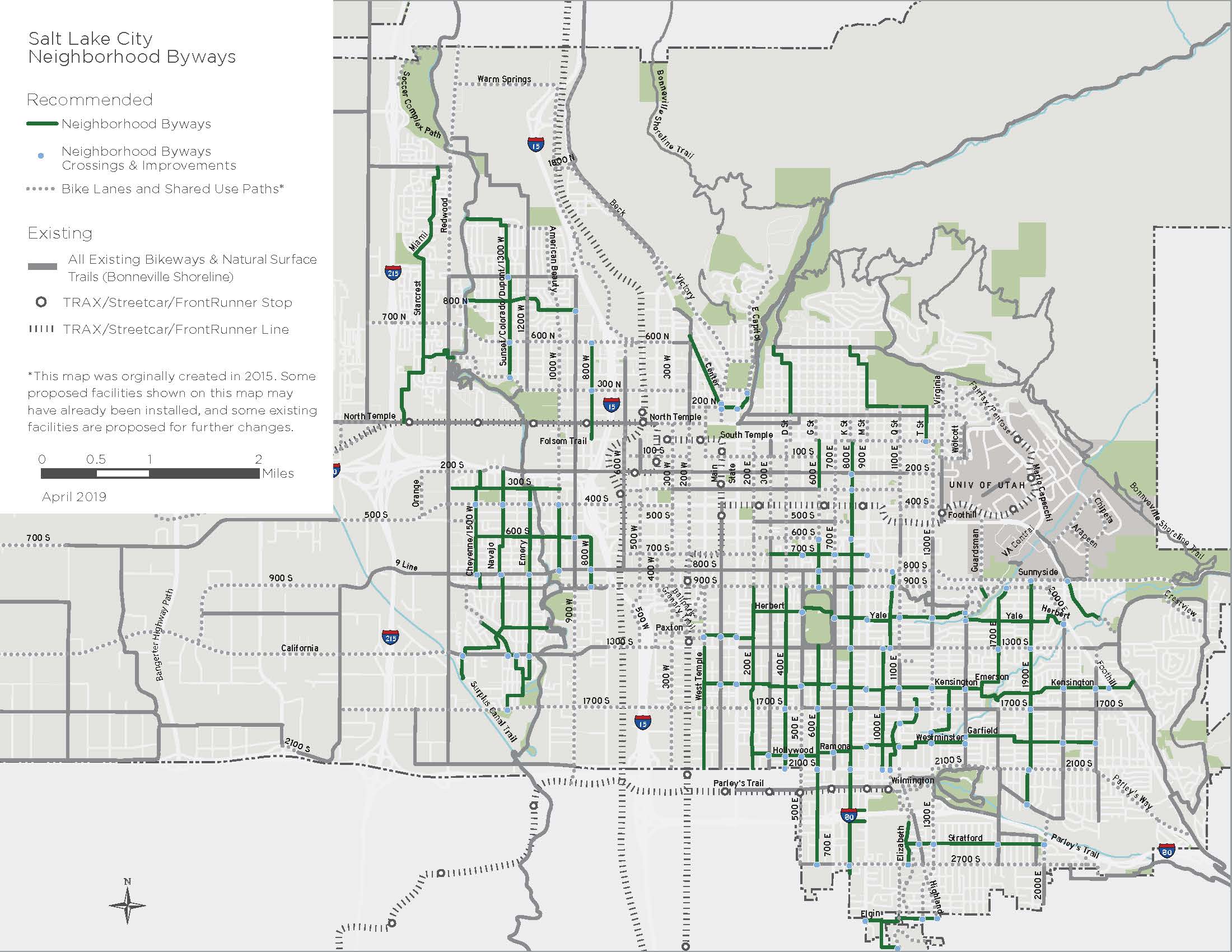
Learn more
Frequently asked questions
What is a Neighborhood Byway?
Neighborhood Byways create pleasant and convenient routes for walking, bicycling, rolling, and other active modes of transportation by encouraging safe travel speeds, discouraging cut-through vehicle traffic, providing safe crossings of busy streets, and connecting people to destinations.
How is a street chosen to be a Neighborhood Byway?
Neighborhood Byways are identified in the Salt Lake City Pedestrian and Bicycle Master Plan and are commonly located along streets with the following characteristics:
- Narrow residential streets with low to modest vehicle traffic speeds and volumes
- Direct connections between parks, schools, businesses, and other community destinations
- Greening along the route such as shade trees
What changes are considered along these routes?
Infrastructure changes along these routes will be evaluated through a planning and public engagement process. Improvements may include:
- Curb extensions (or bulb-outs) at intersections to shorten crossing distances and slow turning vehicles
- Wayfinding signs and pavement markings to guide people biking along the route
- Greening elements, such as street trees, landscaped medians, or planters, to enhance comfort
- Traffic calming features like speed humps, traffic circles, and chicanes to reduce speeding and discourage cut-through traffic
- Crossing upgrades ranging from flashing signs to full traffic signals, based on traffic speed, volume, and safety needs
- Curb ramps designed for bicyclists to easily access pedestrian push buttons at signalized crossings
I live on a planned Neighborhood Byway. How will this affect access to my home?
Neighborhood Byways create streets where residents can safely and comfortably bike, walk, and roll with children or pets. To create this safe and comfortable environment, some traffic calming improvements and minor street access modifications may be needed to manage vehicle speeds and prevent cut-through traffic. However, residents will still be able to easily access to their property.
Can I drive my car on Neighborhood Byways?
Yes, vehicles are allowed, but Neighborhood Byway routes are improved for active modes of transportation such as walking and biking.
Will there be new bike lanes added?
No. Byways use traffic calming, signage, and pavement markings to create a shared street space rather than painted bike lanes.
Will the Byway affect on-street parking?
Byways typically have little to no impact on parking. In some locations, parking restrictions may be added within 30 feet of crosswalks or stop signs to improve visibility—an approach known as “daylighting.” While parking is already prohibited in these areas by law, it’s often not signed or enforced. Daylighting helps everyone see and be seen at intersections, making the street safer for all users.
Will emergency vehicles, garbage trucks, and snow plows still be able to use the street?
Yes. Neighborhood Byways are designed to maintain full access for emergency vehicles and all City services.
Byway Design Guide
The Salt Lake City Neighborhood Byways Design Guide provides a detailed framework for transforming local streets into safe and enjoyable routes for walking and biking. Emphasizing low-speed, low-traffic environments, the guidelines include strategies for route selection, intersection improvements, and traffic calming measures. The goal is to enhance connectivity, safety, and neighborhood livability, making active transportation more accessible and pleasant for all residents. Download the guide to explore our vision for vibrant, connected communities.
While we strive to implement Neighborhood Byways in alignment with this guide, real-world constraints may limit what is feasible in some locations.
600 East Byway photos
These photos show some of the infrastructure that Salt Lake City built on the 600 East Byway.
